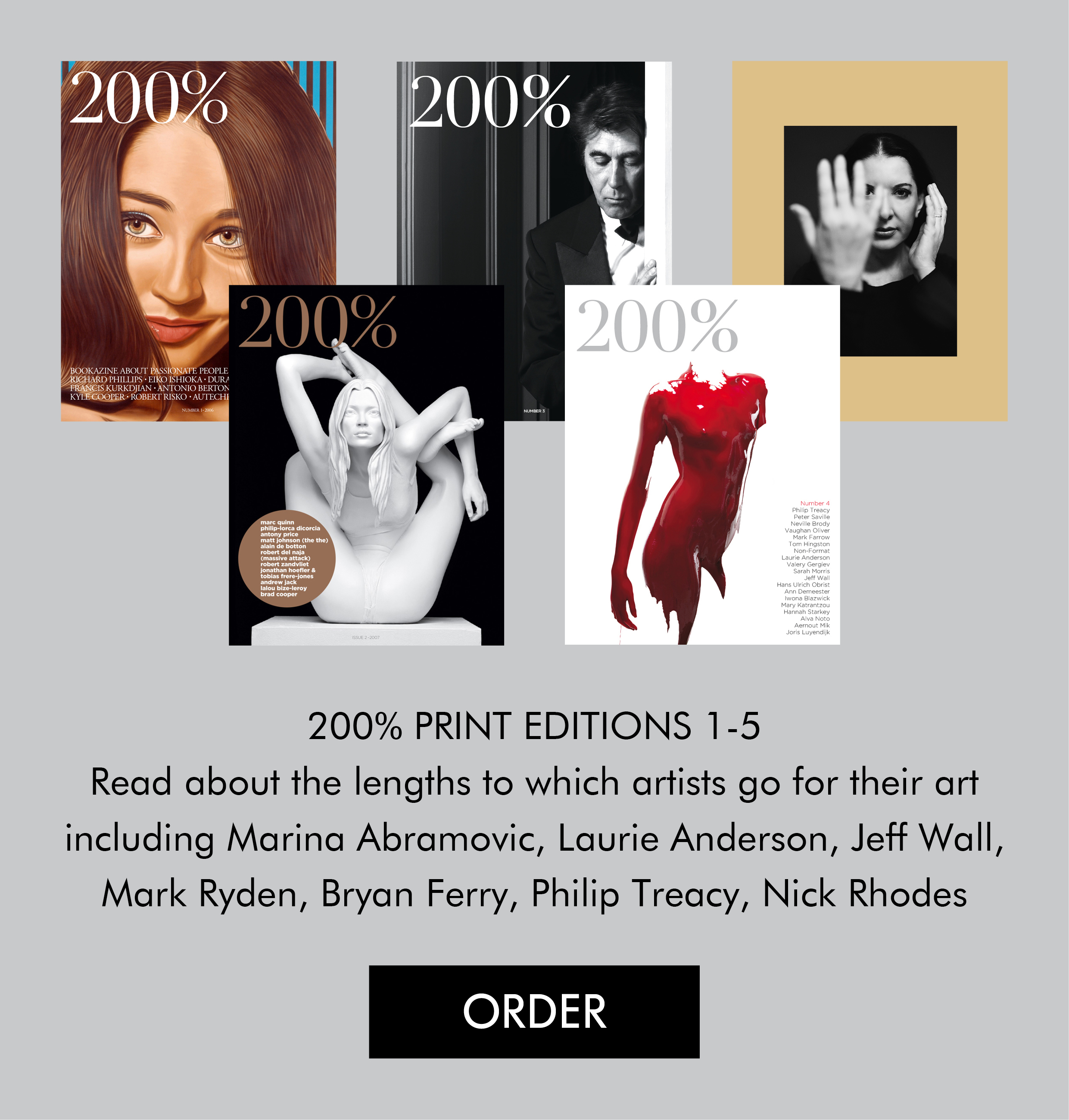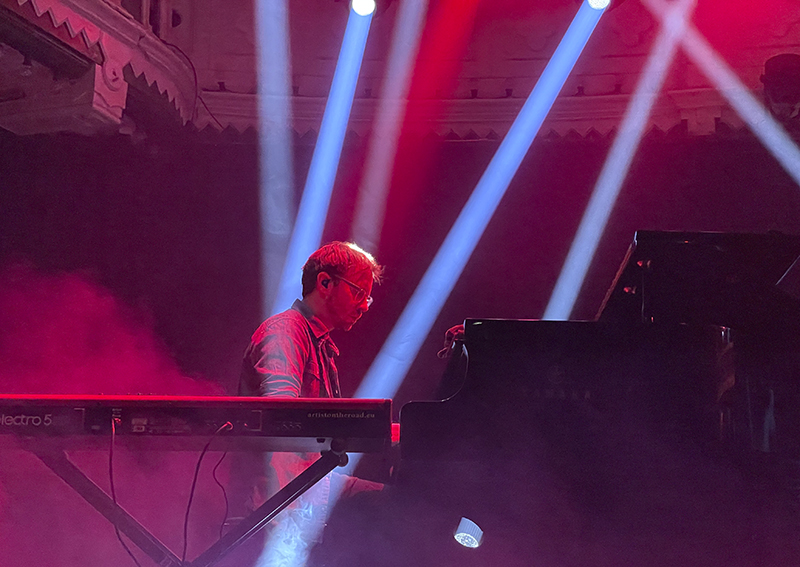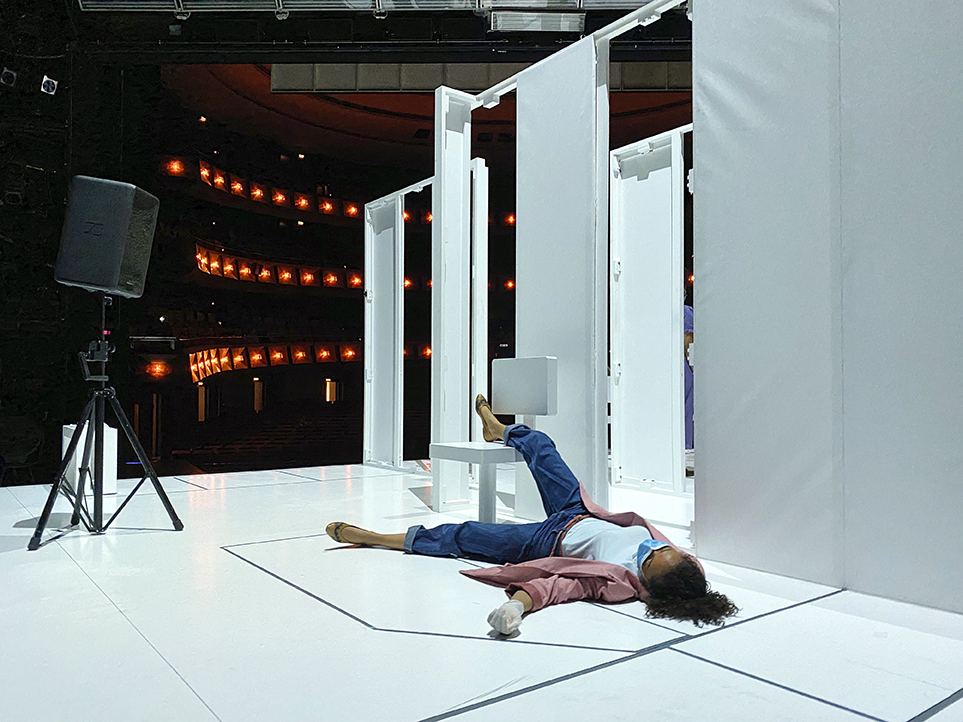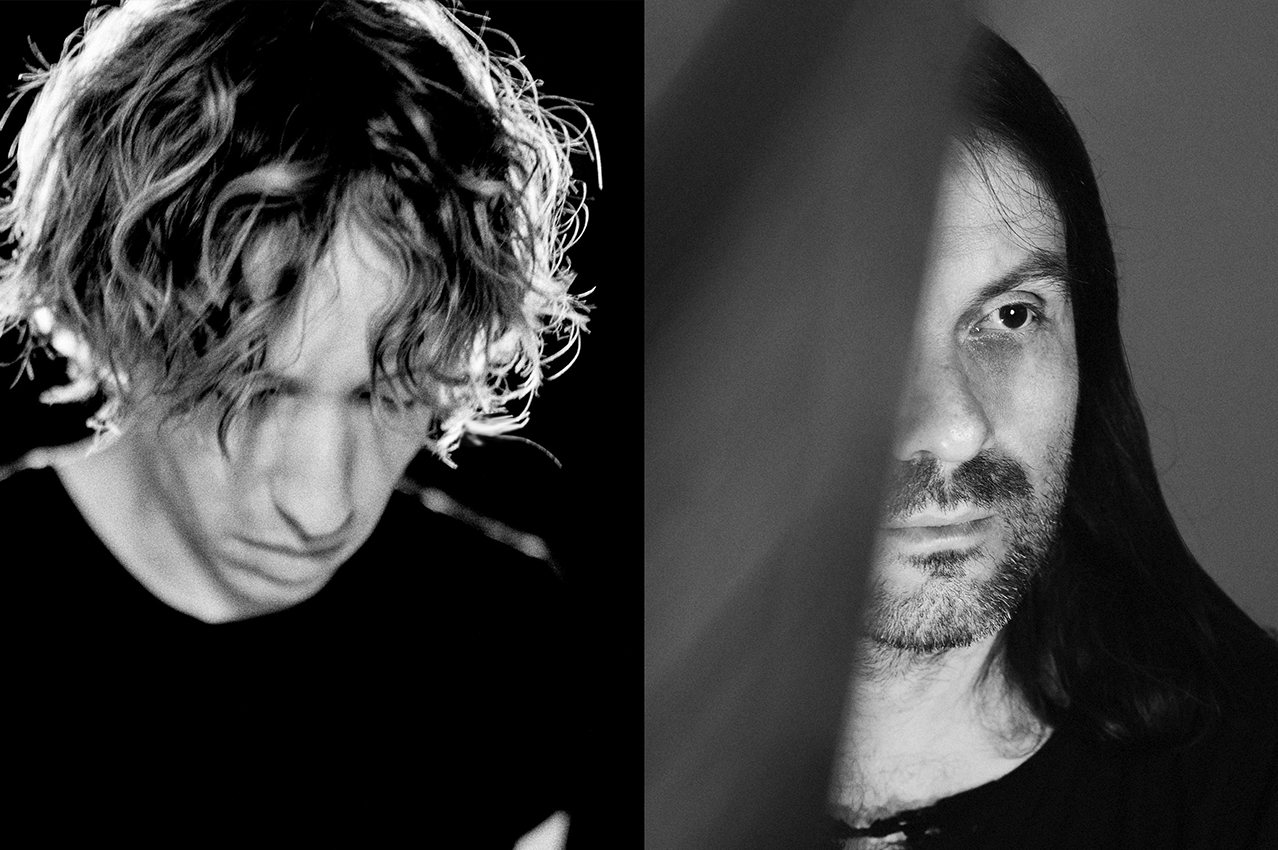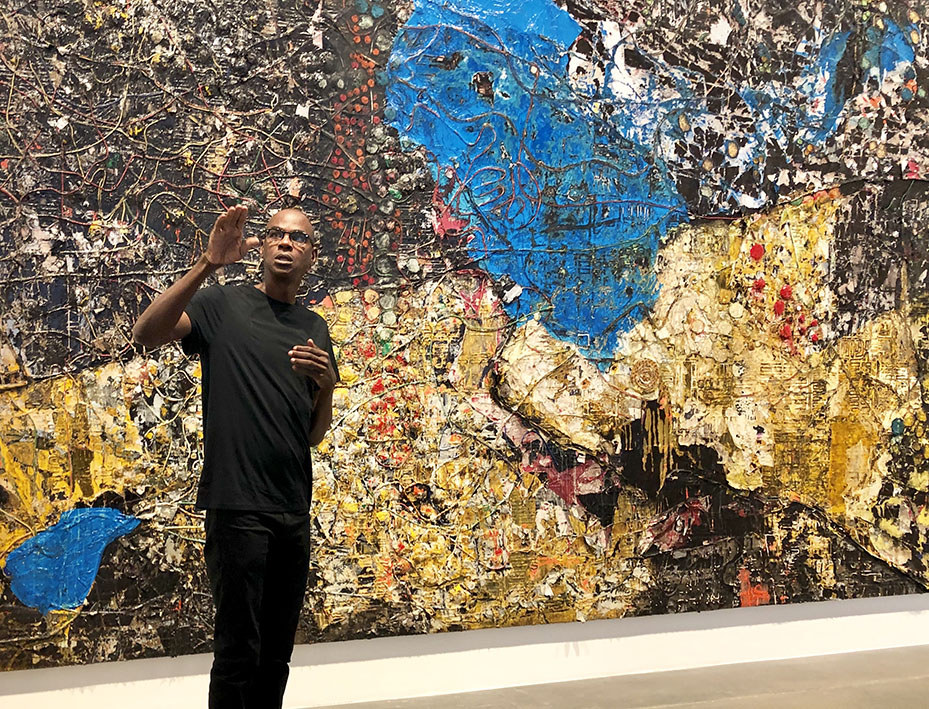
Music Peter Gabriel: Life Lessons from a Rock Star (I)
At The School of Life Peter Gabriel shares the lessons he has learned from his life as a musician and being a human rights activist. 200% sat in the front of the classroom, eager to learn.
Unlike his contemporaries, Robert Plant, Iggy Pop and Steven Tyler, Peter Gabriel doesn’t look like a rock star anymore. These days, he looks more like a wise, sympathetic professor with his white-haired goatee, wearing a collarless shirt and a gilet.
 However, in his days as the lead singer of Genesis, he was a charismatic (Prog) rock star wearing the most bizarre costumes on stage. At a concert in Dublin he wore a fox head and an Ossie Clark red dress he borrowed from his wife impersonating the obscure figure that featured on the Genesis album ‘Foxtrot’. Gabriel recalled the “visceral shock” it created amongst the audience, but it also created massive media exposure as NME put Gabriel, in this costume, on their cover. This inspired Gabriel to come up with even crazier costume ideas. For ‘The Lamb Lies Down on Broadway’ tour he wore a flower mask with his head framed by yellow petals. Most notably, with The Slipperman character: he was dressed as a naked monster covered in lumps with inflatable genitalia. Gabriel’s outlandish gear caused friction within the band. The four other members felt that the theatrics were overtaking the musicianship and they were afraid of being seen as Gabriel’s backing band.
However, in his days as the lead singer of Genesis, he was a charismatic (Prog) rock star wearing the most bizarre costumes on stage. At a concert in Dublin he wore a fox head and an Ossie Clark red dress he borrowed from his wife impersonating the obscure figure that featured on the Genesis album ‘Foxtrot’. Gabriel recalled the “visceral shock” it created amongst the audience, but it also created massive media exposure as NME put Gabriel, in this costume, on their cover. This inspired Gabriel to come up with even crazier costume ideas. For ‘The Lamb Lies Down on Broadway’ tour he wore a flower mask with his head framed by yellow petals. Most notably, with The Slipperman character: he was dressed as a naked monster covered in lumps with inflatable genitalia. Gabriel’s outlandish gear caused friction within the band. The four other members felt that the theatrics were overtaking the musicianship and they were afraid of being seen as Gabriel’s backing band.
 After this tour, Gabriel left Genesis and ventured into a successful solo career with well-known hits ‘Solsbury Hill’, ‘Don’t Give Up’, and ‘Sledgehammer’. Visually, he broke new ground with a series of popular stop motion animation videos including ‘Big Time’, ‘Digging in the Dirt’ and, of course ‘Sledgehammer’, which became the most played video in the history of MTV.
After this tour, Gabriel left Genesis and ventured into a successful solo career with well-known hits ‘Solsbury Hill’, ‘Don’t Give Up’, and ‘Sledgehammer’. Visually, he broke new ground with a series of popular stop motion animation videos including ‘Big Time’, ‘Digging in the Dirt’ and, of course ‘Sledgehammer’, which became the most played video in the history of MTV.
Gabriel’s imaginary music as a solo artist and with Genesis – renowned for their long instrumental interludes – was cinematic and panoramic. Film directors Alan Parker and Martin Scorsese approached him to score the soundtracks for ‘Birdy’ and ‘The Temptation of Christ’. In 1989, Gabriel launched the Real World record label inspired by his interest in world music and introduced Youssou N’Dour and L. Shankar to a Western audience.
His anti-apartheid song ‘Biko’, led his a career into becoming a human rights activist and campaigner. He participated in the Amnesty International Human Rights Now! world tour and he co-founded Witness, an international organisation that trains and supports people using video in their fight for human rights. From a conversation with Richard Branson came The Elders: a group of global leaders working together for peace and human rights. Nelson Mandela agreed to support the idea and brought a group of leaders together. In 2006 Gabriel was awarded the Man of Peace award by the Nobel Peace Laureates.
A fascinating life and career that was not examined by the School of Rock but by The School of Life, where the philosopher Alain de Botton, asked Gabriel questions about the lessons that he has learned from his life. The School of Life is an organisation dedicated to the development of better emotional health through the help of culture. It is the brainchild of De Botton, author of the bestseller ‘How Proust Can Change Your Life’ and a Peter Gabriel fan.
During the introduction, De Botton announced to the public that he was not going to interview but rather conduct a conversation with Gabriel about his life. When the topic parents of Gabriel’s parents was raised, Gabriel turned the tables on De Botton. He asked De Botton to tell him something about his parents (which he did wonderfully). De Botton balanced the captivating conversation between serious and light and threw Gabriel off track to expand on what he likes about Justin Bieber when he mentioned he listens to his music. A funny exchange happened after a clip was shown of Gabriel’s moving duet with Kate Bush, ‘Don’t Give Up’ – a song about the difficult economic situation in 1980s England under Margaret Thatcher. In the song, Gabriel sings about feelings of isolation and despair whereas Bush sings about hope and encouragement.
-[In the song] There is a sort of archetype, the mum,” De Botton remarks.
-“I never thought of it as the mum, more the partner,” Gabriel interjects.
-“That is saying something about me, isn’t it?” De Botton replied with self-referential humour.
Gabriel is renowned for his soulful singing voice with big emotional screams as in ‘Rhythm of the Heat’ or ‘Blood of Eden’. In ‘The South Bank Show’ documentary he commented that “the naked sound of the voice is more emotive without lyrics” and his screams sometimes gets a shiver down your spine. His speaking voice is soft and calm and he spoke candidly, at times even confessionally, about the ups and downs of his life and career. Here are three of the seven lessons he shared from his life.
 1. WHY WE MAKE MUSIC
1. WHY WE MAKE MUSIC
“I think we like to thump our chests, show off a little bit, dance, trying to find a mate. There are lots of reasons for making music,” Gabriel answered to De Botton’s opening question “What is it about the human animal that makes us make music?” The reason as to why Gabriel started to make music was instigated by his childhood. “When you are a shy, spotty boy, but you are in a rock band the world opens up with music”. Gabriel was sent to a public school, which he considered to be just on the cusp of suffering and rather unpleasant, however, music was a retreat. In the common room pupils were allowed to play music. He used to listen to soul records and turned them up as loud as he could and dance. For him music was pure release.
“Music plugs directly into the nervous system in a way that a lot of other communications go through more or less filtered”, Gabriel commented on the effect music has on people. “Music, you can feel it, it hits your chest, depending on where the frequencies are. There are patterns that instinctively go with them [the nervous system]. It has a quick release”.
Peter Gabriel: Music plugs directly into the nervous system. Other communications go through more or less filteredAs a child Gabriel listened to church music, hymns, classical and most of all soul. He was drawn to the soul singers in terms of what they could do with their voice and storytelling. As an example, he mentions how Nina Simone sang the protest song ‘Strange Fruit’ about the lynching of African Americans. Gabriel says he can remember the exact moment as to where he was when he first heard certain songs such as ‘Love Me Do’ by the Beatles; in the back of his parents’ car.
Thanks to his seven year old son, Gabriel reveals that he now listens to Justin Bieber and appreciates the music of the Canadian teen idol. “It is very musical, there are some great rhythms, it is beautifully produced, it is good pop music and he [Bieber] sings very well. To the people that dismiss him as teen fodder, I would say listen more carefully”.
Peter Gabriel: People that dismiss Justin Bieber as teen fodder, I would say listen more carefully2. WHERE MY SONGS COME FROM
“Right now they all come from Justin Bieber”, Gabriel jokes when De Botton asks him where his songs come from. At the beginning Gabriel started off trying to copy the people that he loved. “When you take something from someone else and you don’t digest it, it is just regurgitation. However, when you absorb something from other people and it goes through your digestive system it comes out at the other end a slightly different colour. It has been through your process. It becomes litter again and then fertilizes the next group of songs. You really want to be wide awake and be able to steal, absorb, borrow and feed off anything that impresses you. I have said this before, but it’s like dogs in the park, you sniff something and you jump on it”.
It took Gabriel many years to develop certain songs. His fourth solo album that combines new technology such as the Fairlight CMI and third world rhythms took him one and a half year to complete. (I can highly recommend the documentary ‘The South Bank Show 1982’ that follows Gabriel in his creative process of making the album).
Gabriel discloses to De Botton that he may be afraid of the final commitment and he loves detours and distractions. “I always go off on a tangent rather than finish the songs.”
This would drive Daniel Lanois, the co-producer of the ‘So’ album nuts. In the documentary series ‘Classical albums’ Lanois talks about the extremes measures he took to in order to make Gabriel finish the songs. Towards the end of the album Gabriel struggled with the lyrics. At one point, Lanois smashed Gabriel’s phone to pieces as he was making endless telephone calls and needlessly delaying the writing process. Lanois went even further and made Gabriel sit down and finish the lyrics when he nailed him into the barn and then went off for lunch. Gabriel says that there are songs, though, that came easy such as ‘Here Comes the Flood’.
 3. MAPPING MY EMOTIONAL TOOLBOX
3. MAPPING MY EMOTIONAL TOOLBOX
Gabriel has written very personal songs about emotional distressing episodes in his life. ‘Blood of Eden’ dealt with his relationship struggles. His first solo hit ‘Solsbury Hill’ is about “letting go” when he left Genesis. ‘Digging in the Dirt’ is about his period of self-healing through therapy. De Botton refers to an interview with The Guardian in which Gabriel said he saw music as “an emotional toolbox”. With each song he writes he maps and adds a song to his emotional toolbox. “You have certain records and songs that deliver a certain emotion or function that may calm you down, comfort you, excite you or whatever it is. ‘I Grieve’ came from when my wife lost her mother”.
Part 2: https://200-percent.com/peter-gabriel-li…om-a-rock-star-2/
Gabriel on DON’T BE AFRAID, WORK WITH THE BEST, GIVING IT YOUR ALL PEOPLE, DON’T GIVE UP
Written by Thierry Somers

